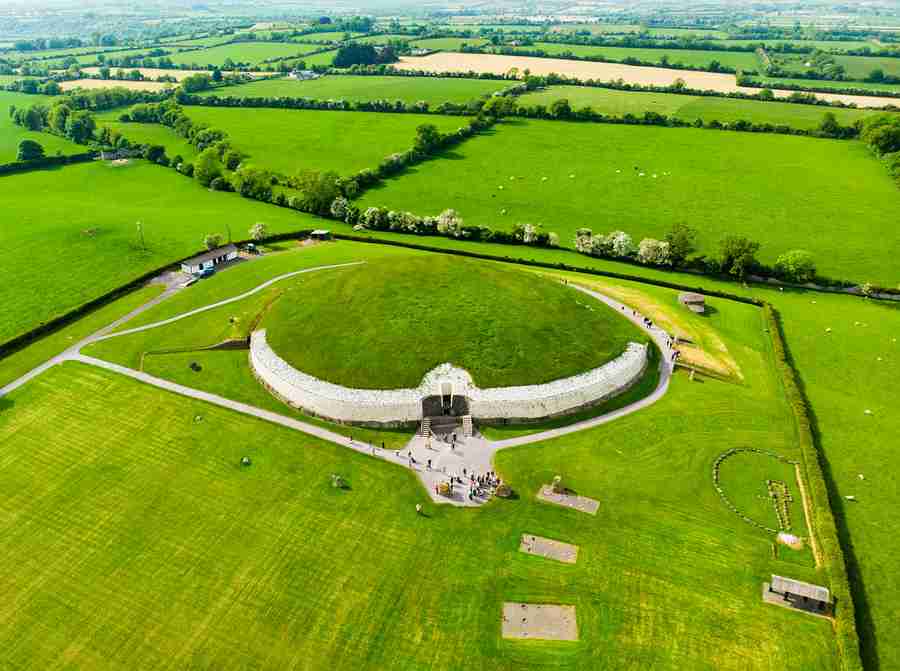
The things people come to Ireland for—Guinness, fairytales, green pastures, and ancient history—are more of a way of life here than tourist tokens. Following the boom of the Celtic Tiger economy, Ireland has transformed itself into a world-class food destination. Guinness’ grip on Irish culture is strong, but there’s also a burgeoning craft beer and distillery scene. Locals revel in food, drink, and music nightly, and joining in is never a bad idea. When you’re ready to get out of the pub and get schooled in history, Ireland presents some of Europe’s oldest monuments and ancient legends.
- Visit Bronze Age Ruins
Before the ancient Celts came to Ireland in the 3rd century BC, Vikings landed in 795, and the British took over in the 1100s, Neolithic settlers occupied Ireland. Their ancient hunter-gatherer culture still influences Ireland today. Built in 3200 B.C. The massive stone tomb of Newgrange just outside of Dublin is characterized by artistic rock carvings and its lack of windows—once a year, on the Winter Solstice, light shines through the lone window, illuminating a long passageway. For more information, visit www.newgrange.com
- Attend the Galway Oyster Festival
An Irish experience wouldn’t be complete without food and drink, and at the end of September, the Galway Oyster Festival delivers. The event in Ireland’s largest west coast city includes a masquerade party, cooking demonstrations and a closing gala. The main event is the World Oyster Opening Championship, which invites top oyster shuckers from all over the world to open a box of 30 local oysters as quickly as possible. (To qualify, shuckers must be able to open 18 oysters in two minutes, and usually one participant per country is invited.) If you’re not competing, you can eat oysters and other seafood at your leisure—with plenty of champagne and Guinness on the side. For more information, visit www.galwayoysterfest.com
- Listening to Music in Doolin
- Take a Black Taxi Tour in Belfast
You’ve heard of the Troubles, the decades-long conflict between Northern Ireland and the Republic of Ireland, but you won’t really understand them unless you visit Belfast, the capital of Northern Ireland. Black Taxi Tours were founded as a way for willing guides to educate visitors about the Troubles in a space where visitors could freely ask questions about this sensitive conflict. Tours are led in, you guessed it, black taxis by locals who explain the war between the Protestant North, which pledged allegiance to the British crown, and the Catholic South, which fought for a unified Ireland after becoming a republic independent from Britain. The history is illustrated through conflict sites and giant streetside murals created by local as a form of political expression.
- Learn How the Vikings Shaped Dublin
When the Vikings landed on northern Irish shores in 795, they pillaged and plundered their way down the coast to Dublin, which they captured in 849. They named the city “Dyflin,” a variant of the Irish “Dubhlinn,” which meant “black pool.” One of the most well-established Viking settlements outside of Scandinavia, Viking Dublin was urbanized and developed into the Irish capital. Excavations around Dublin have uncovered troves of Viking artifacts, mostly from burial sites, including tools, ships, and houses, leading historians to understand how the Vikings turned Dublin into a stronghold. – Elaine Murphy